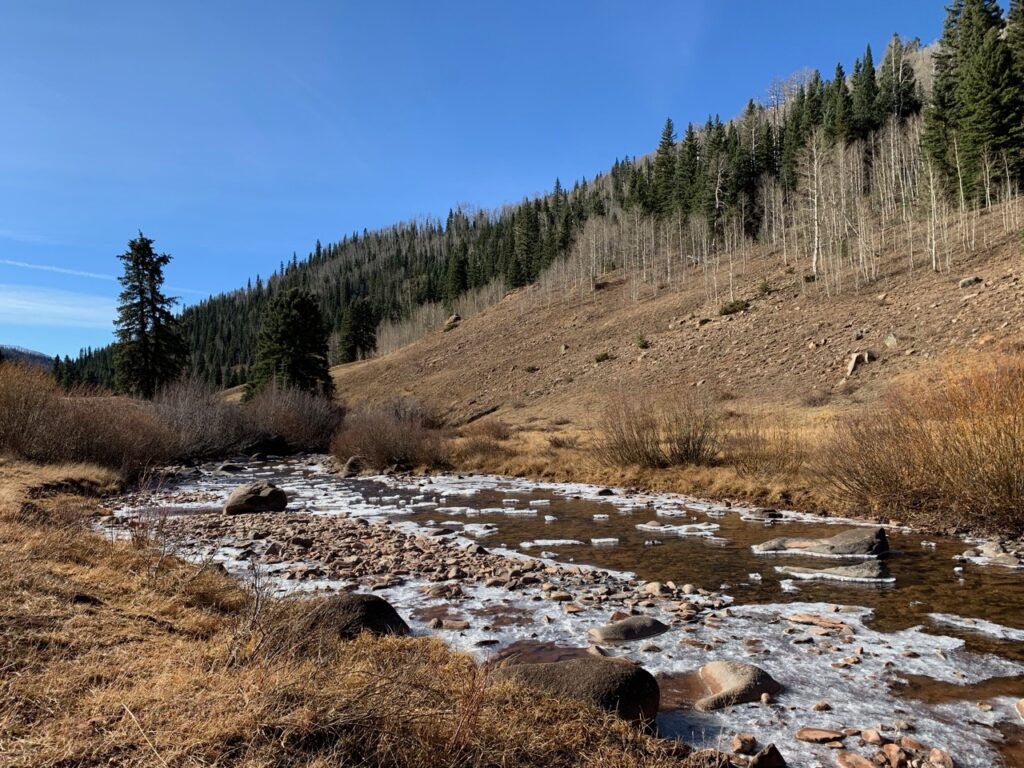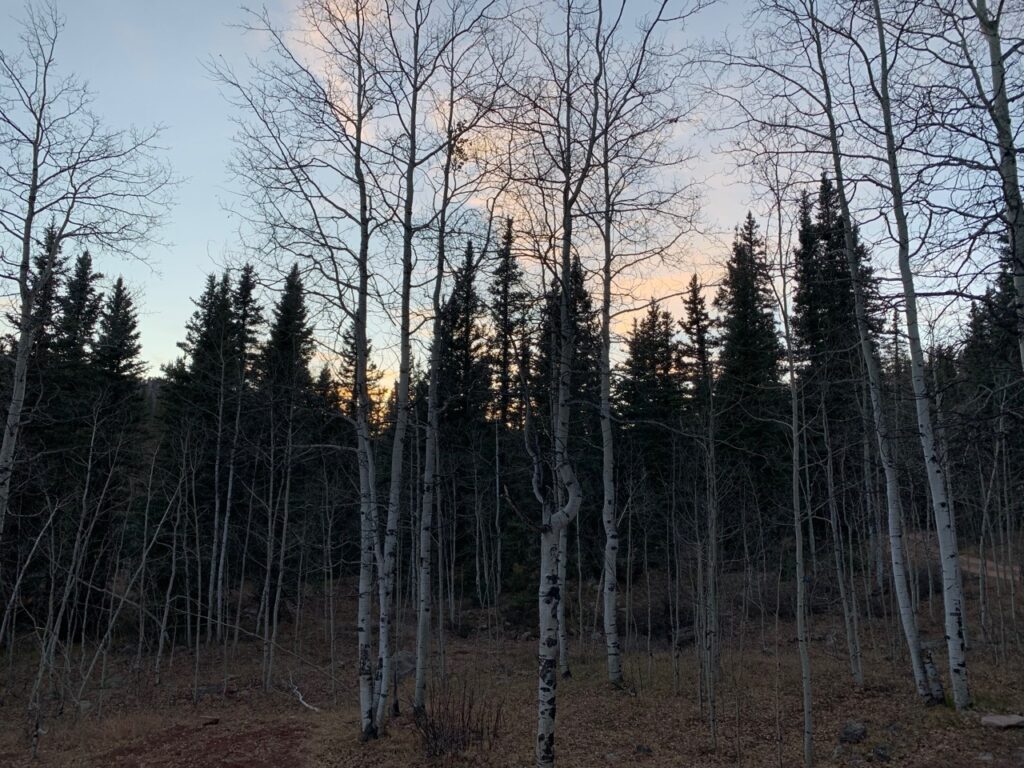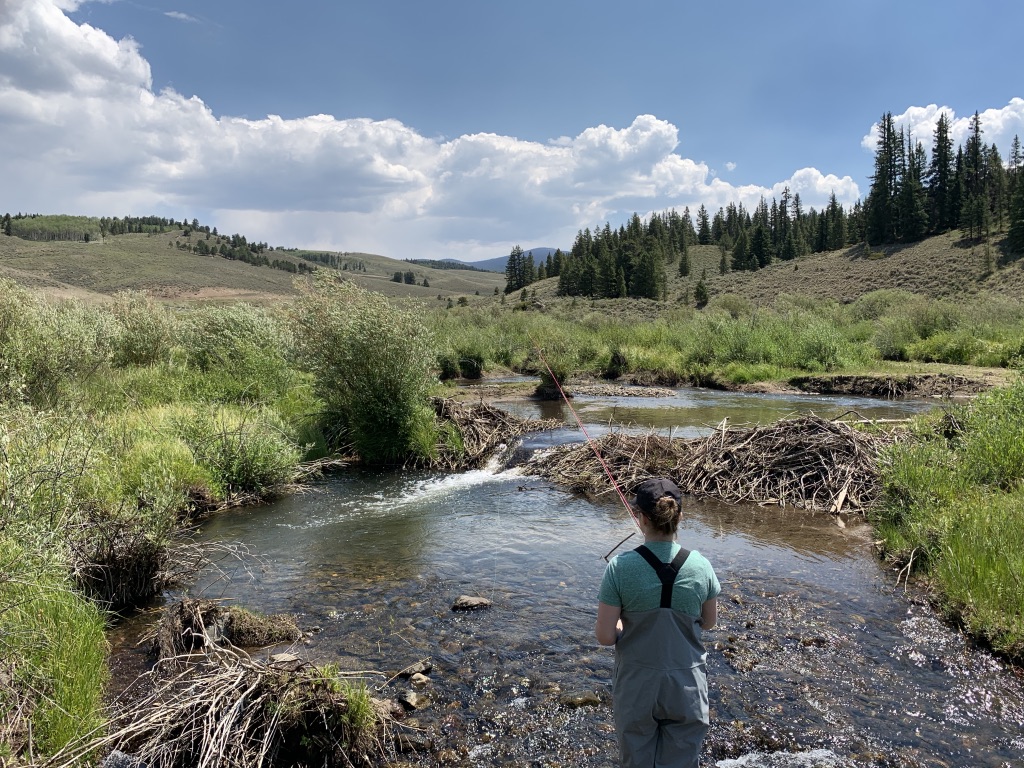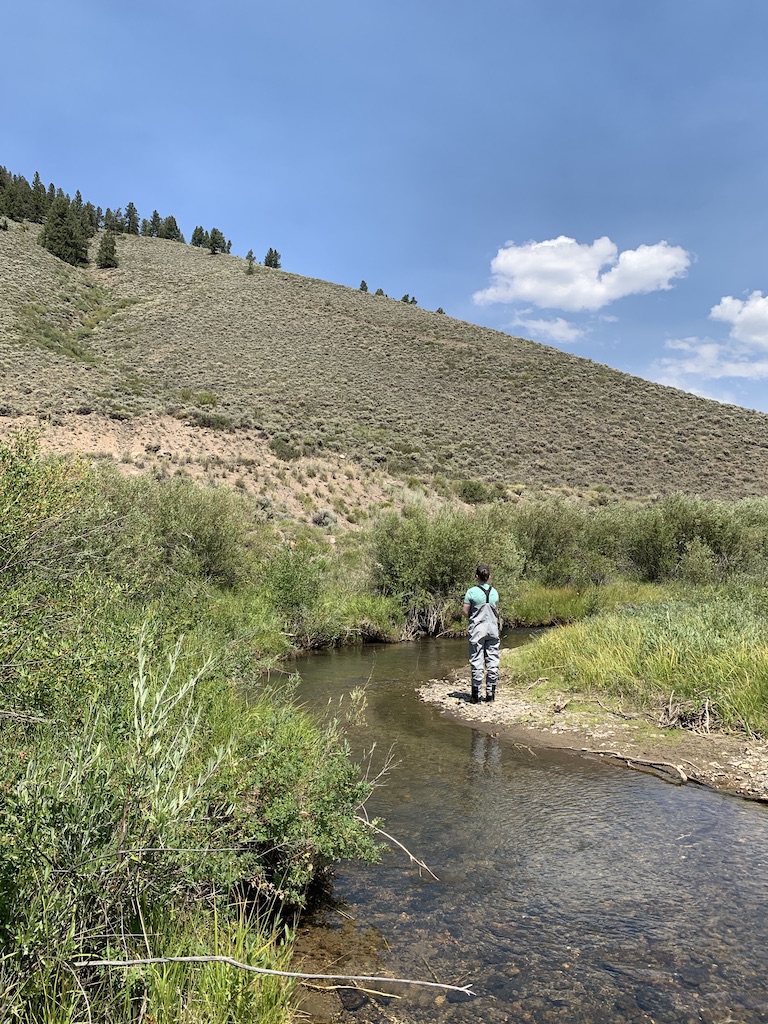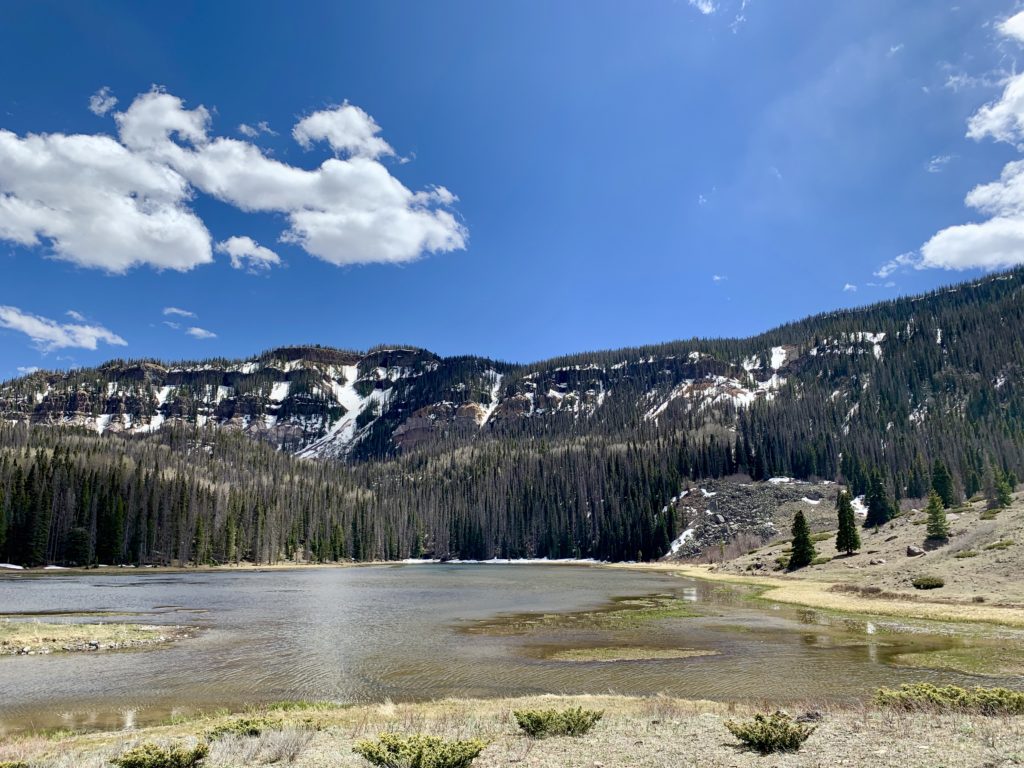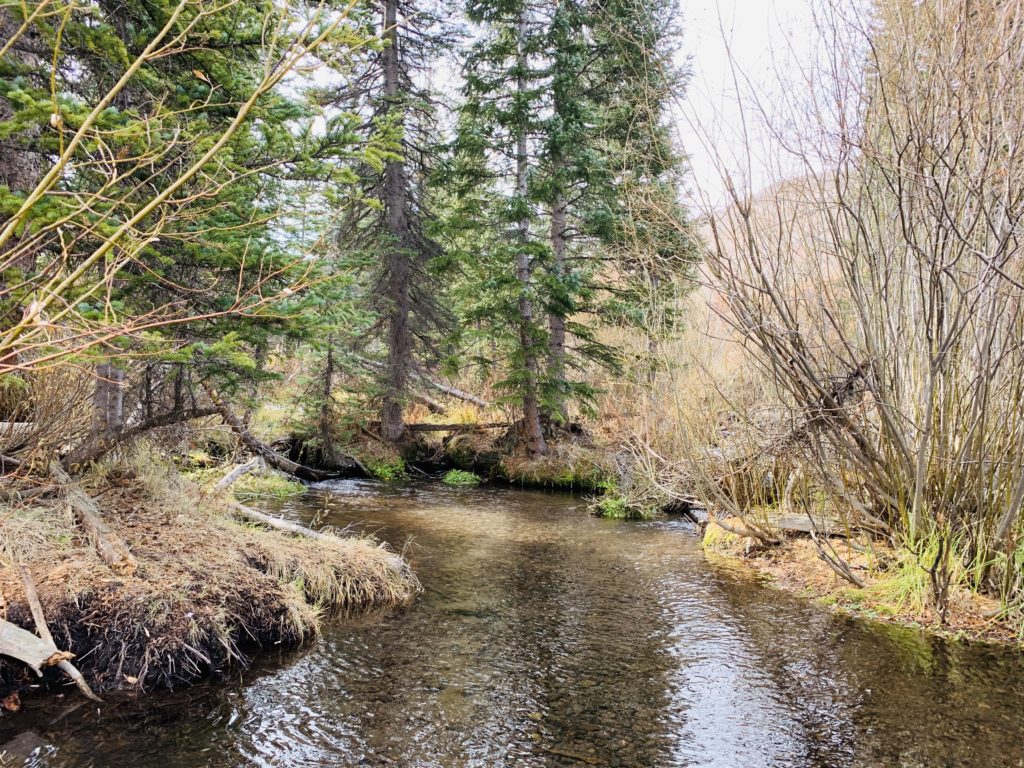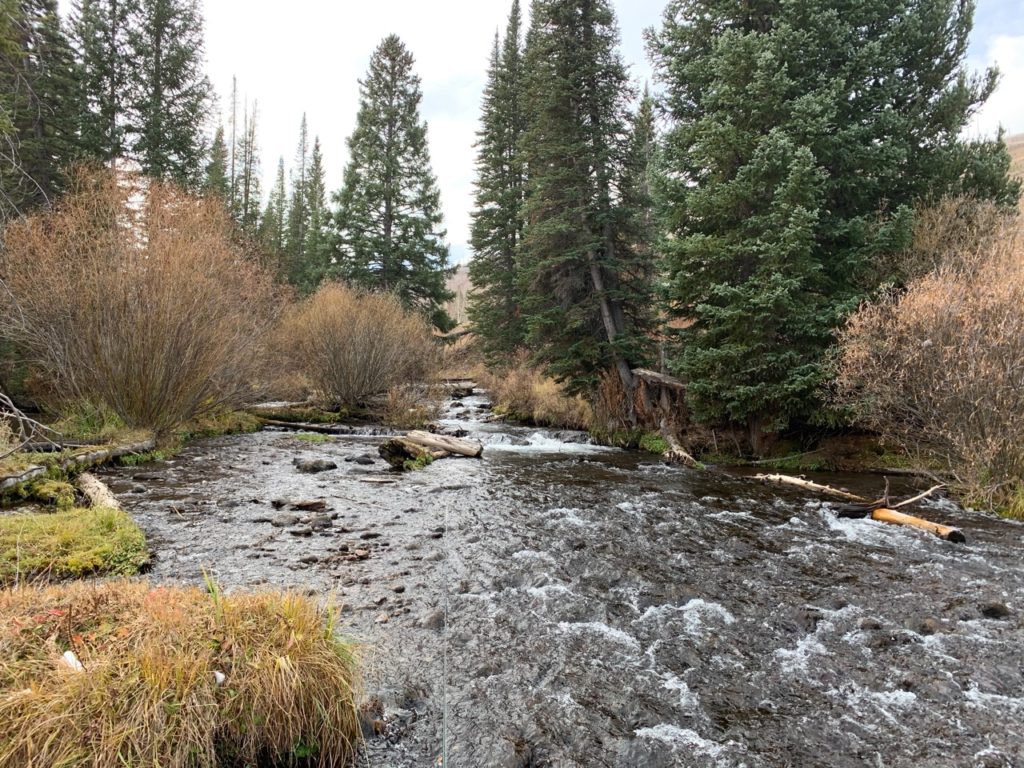Despite the overnight dousing, next morning the river still ran clear. We breakfasted, broke camp and I volunteered to row while the others fished, the morning cool, the canyon still in shadow. Churning whitewater interspersed languid banks overhung with tall grasses dipping into the current, where a patient drift would sometimes yield a fish rising to a dry fly.
“The tail-out of this next rapid is a great one to nymph,” said Mort. “Pull over below. You should fish it.
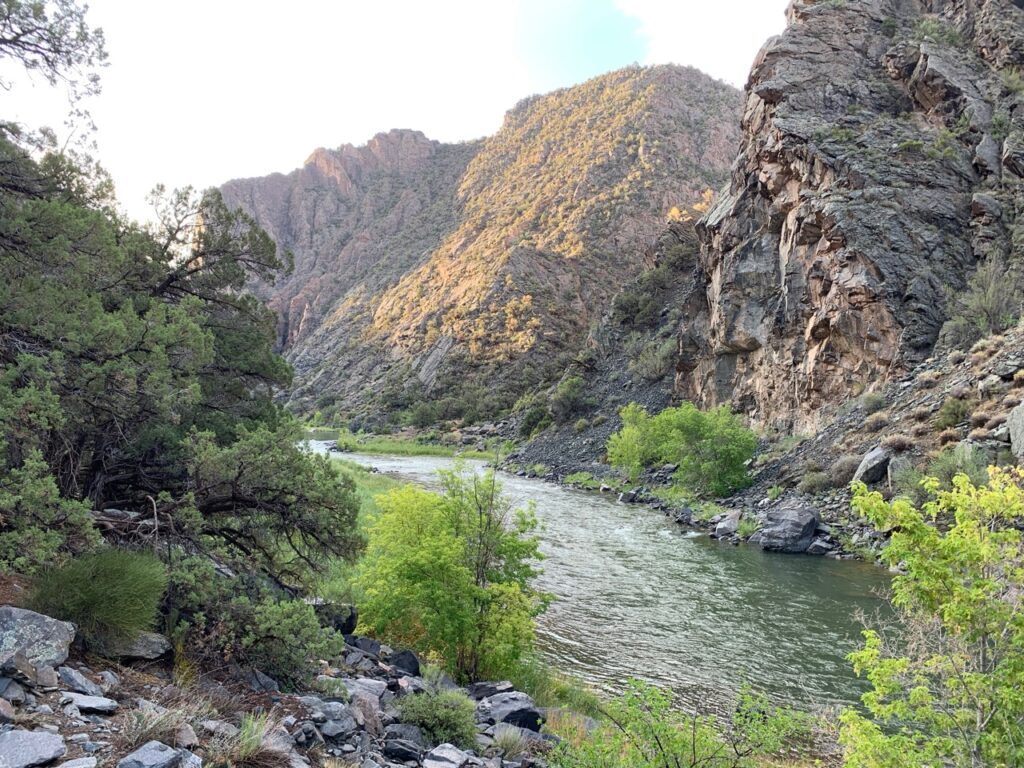
I eased the raft onto a narrow strip of sand backed up against a cliff face that angled out towards the river. While the others sat on the sand and opened beer, I rigged a rod for nymphing then walked upstream toward the run. A broad fan of whitewater narrowed toward the far bank, creating a trench with several distinct seams of current, slower and more shallow in close, faster and deeper further out.
I started first with lighter weight, adding more as I worked into the faster water. I quickly became absorbed in my task, my sole focus the indicator and mending the line to prevent it being dragged by the several current seams of differing speed and direction. Several times I set the hook to what I imagined a strike, only to pull up flies encased in river weed.
Beyond where I felt safe wading a large flat boulder sat subsurface. Had the river been lower, it would have provided an ideal platform on which to wade out to in order to access the deeper, faster seams toward the far bank where the larger fish no doubt lurked. Instead I targeted multiple drifts around the boulder and twice hooked into fish that darted deep then leaped, thrashing and silvery in the daylight, and twice slipped the hook.
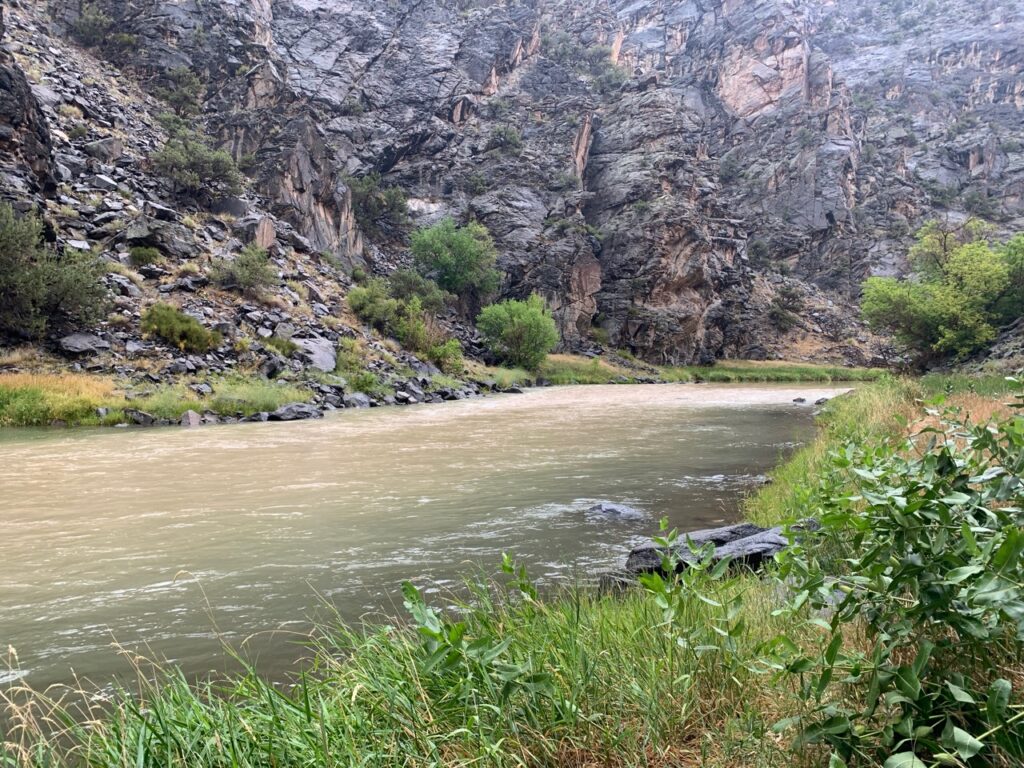
So entranced by the river and its nuances, I hadn’t noticed the dark clouds rolling in until a rumble of thunder caused me to look skyward. Soon a light rain began to fall and I retreated to the beach where, in the lee of the overhanging cliff face a lunch table had been set up. I built a hearty sandwich then stood and ate as curtains of rain played swirling patterns upon the river’s surface. After half an hour the rain eased but then a change came over the water, at first turning a chalky green before tea-colored then chocolate milk with heavy slicks of debris – pine needles and cones, juniper berries, sticks and twigs and anything washed down out of side canyons upstream that had borne the brunt of the cloud burst.
From the river, now thick and turbid, rose the scent of mud and juniper. Small trees bobbed in the current and the beach on which we stood began to shrink as the water level rose.
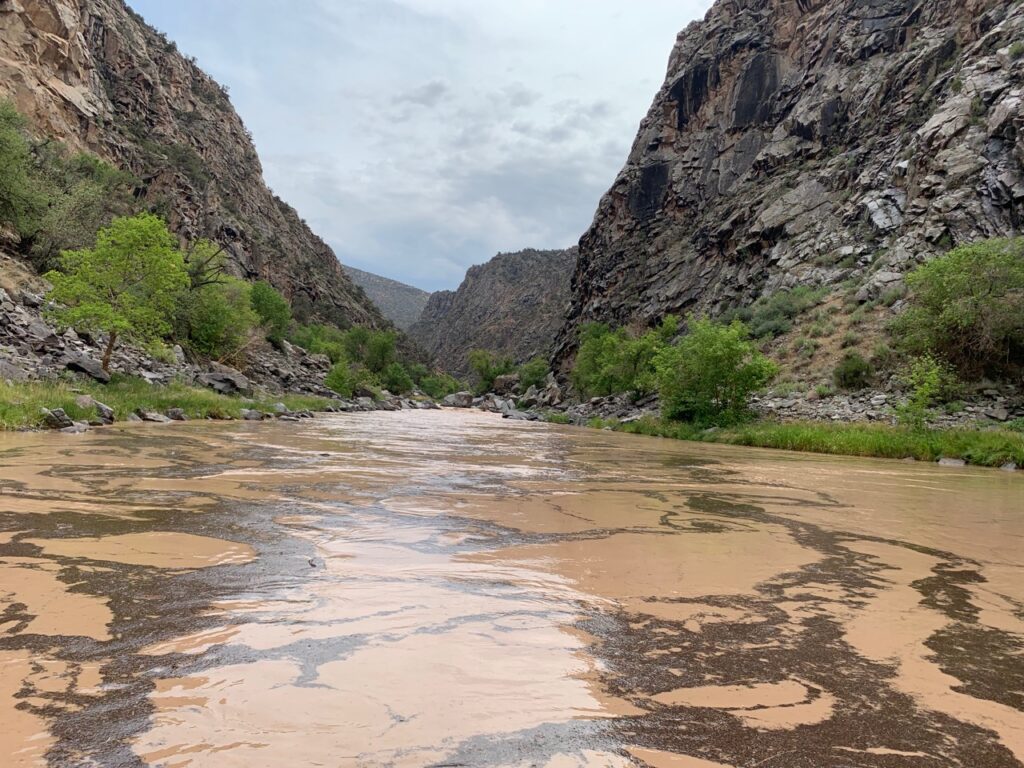
“Must have hit hard in one of the side canyons,” someone opined. “We only caught the edge of it, I guess.”
“Well, that’s fishing done for today,” I observed, and began the process of breaking down my rod. I reached into the drag bag tethered to the raft and withdrew a beer, blowing the muddy water from the rim of the can before opening it. Creation at work, I thought, as I looked out across the river to the cliffs of the far bank where slender waterfalls had begun tracing familiar paths stained with the watermarks of previous downpours dating back who knew how far.
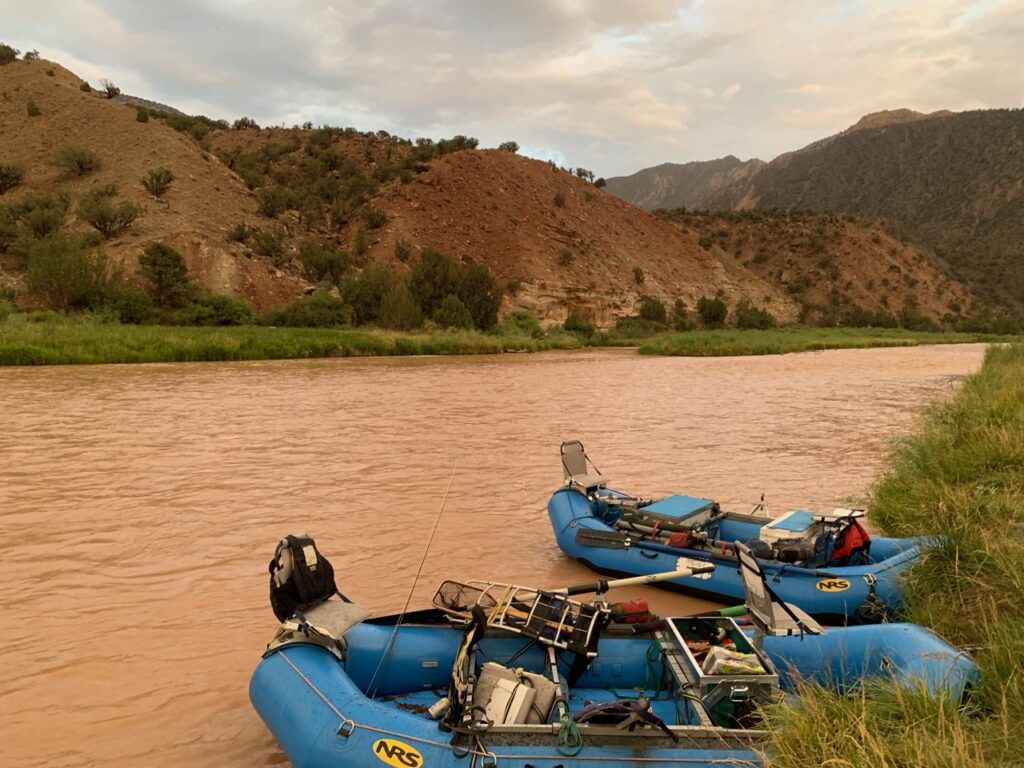
We reached camp early, pitched tents then lined our chairs along the river bank and watched the desert flow by.




